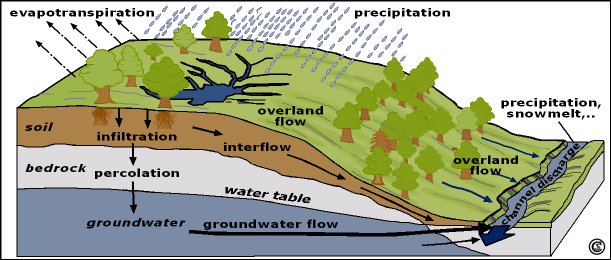

Additionally, the area ratio of karst depression has great influence on the runoff processes in karst catchment. Sensitivity analysis indicates that the parameters related to the first tank are most sensitive to the simulation results, whereas the change of parameters related to the second and third tanks cannot significantly influence the simulation results. Root mean squared errors are 6.24 m 3/s and 5.35 m 3/s during calibration and validation periods respectively. Nash-Sutcliffe efficiency (NSE) coefficient is 0.85 during the calibration period and 0.78 in the validation period. Results show that the proposed model can generally reproduce the runoff generation and concentration processes well. The conceptual hydrological model is further calibrated and validated over the Hamajing catchment, a small karst catchment in Hubei Province, China. River channel routing is carried out based on the Muskingum approach.

The surface runoff loss is controlled by the area ratio of karst depression and corresponding subcatchment. During the process of flow concentration, surface runoff from each grid is reduced by karst depressions at its lower reach.
#Hydrological processes runoff serial#
A three serial tank model coupled with two soil tanks is established at each grid in each subcatchment, to simulate surface runoff, interflow, groundwater runoff, and soil moisture dynamics. To fill this concept and technology gap, we propose a conceptual hydrological model considering the role of karst depressions in this study. However, simulating methods of runoff processes considering the impact of karst depressions are rarely reported. Storm water tends to be stored in karst depressions firstly before routing to the catchment outlet. Karst depressions play an important role in runoff generation and concentration processes of karst catchments.


 0 kommentar(er)
0 kommentar(er)
